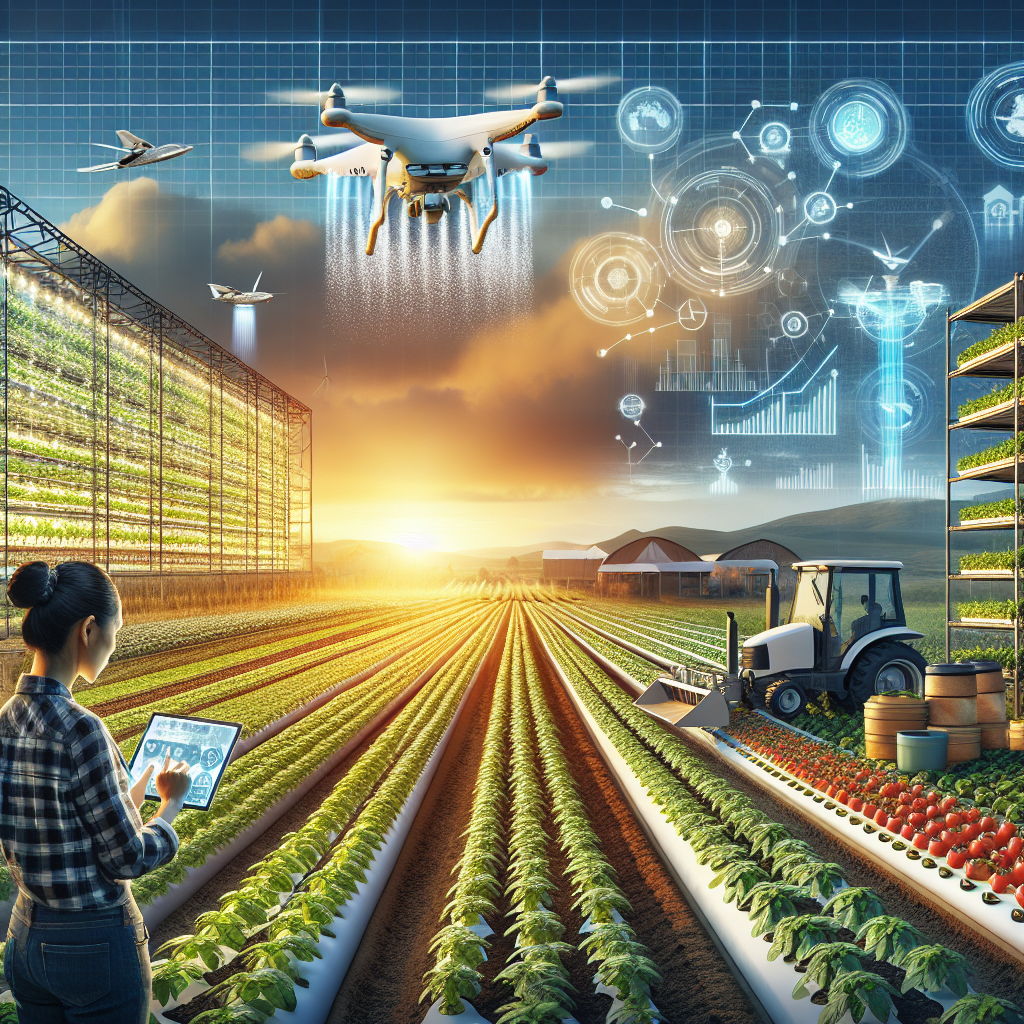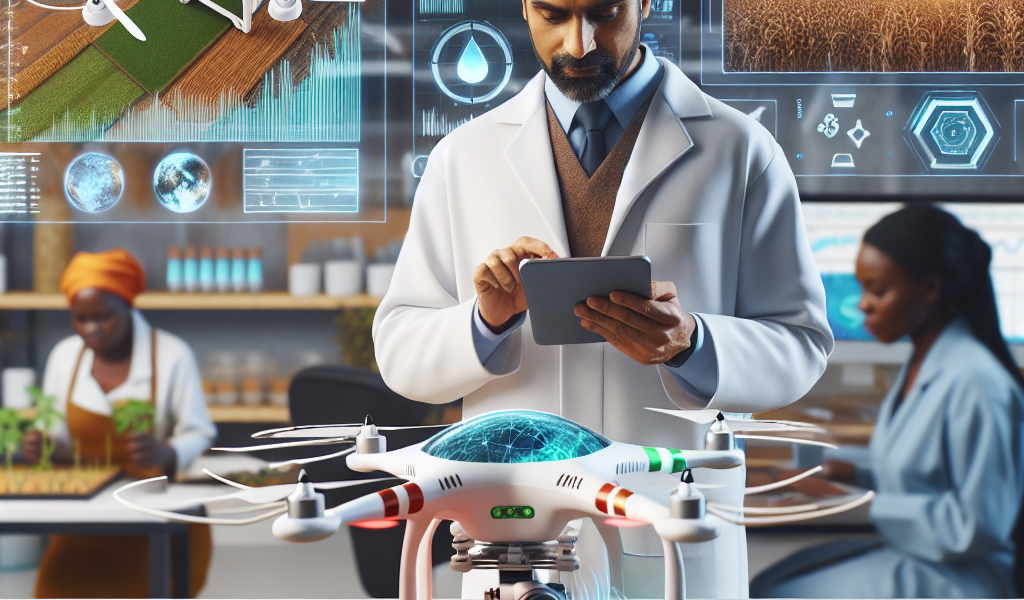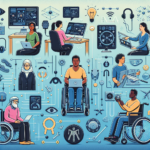-
Table of Contents
“Empowering Harvests: Technology’s Role in Global Food Security”
Introduction

Global food security is a pressing issue as the world’s population continues to grow, and climate change disrupts traditional agricultural practices. Technology is playing a pivotal role in addressing these challenges by enhancing food production, distribution, and sustainability. Innovations such as precision agriculture, biotechnology, and data analytics are revolutionizing farming practices, enabling more efficient use of resources and higher crop yields. Additionally, advancements in supply chain management and food preservation are reducing waste and ensuring that food reaches those in need. Through these technological interventions, we are making significant strides towards achieving a more secure and sustainable global food system.
Precision Agriculture: Enhancing Crop Yields with Advanced Technology
In an era where the global population is rapidly increasing, the challenge of ensuring food security has never been more pressing. Fortunately, advancements in technology are providing innovative solutions to enhance crop yields and address this critical issue. Precision agriculture, a farming management concept that uses technology to observe, measure, and respond to variability in crops, is at the forefront of this agricultural revolution.
One of the key components of precision agriculture is the use of satellite imagery and drones. These tools allow farmers to monitor their fields with unprecedented accuracy. By capturing high-resolution images, farmers can identify areas of their fields that may be underperforming due to factors such as pest infestations, nutrient deficiencies, or water stress. This real-time data enables them to take targeted actions, such as applying fertilizers or pesticides only where needed, thereby optimizing resource use and minimizing environmental impact.
In addition to aerial surveillance, soil sensors play a crucial role in precision agriculture. These sensors measure various parameters, including moisture levels, temperature, and nutrient content. By providing continuous, real-time data, soil sensors help farmers make informed decisions about irrigation and fertilization. For instance, if a sensor detects low moisture levels in a particular area, the farmer can activate an irrigation system to deliver water precisely where it is needed, ensuring that crops receive the optimal amount of hydration without wasting water.
Moreover, the integration of big data and machine learning algorithms is revolutionizing the way farmers manage their crops. By analyzing vast amounts of data collected from various sources, these algorithms can predict crop yields, identify potential threats, and recommend best practices for planting and harvesting. This predictive capability allows farmers to plan more effectively, reducing the risk of crop failure and increasing overall productivity.
Another significant advancement in precision agriculture is the development of autonomous machinery. Tractors and harvesters equipped with GPS and advanced sensors can operate with minimal human intervention, performing tasks such as planting, weeding, and harvesting with remarkable precision. This not only reduces labor costs but also ensures that agricultural practices are carried out with consistent accuracy, further enhancing crop yields.
Furthermore, the advent of Internet of Things (IoT) technology has enabled the creation of smart farming systems. These systems connect various devices and sensors across the farm, allowing for seamless communication and coordination. For example, a smart irrigation system can receive data from soil sensors and weather forecasts to determine the optimal watering schedule. Similarly, a smart greenhouse can adjust temperature and humidity levels based on real-time data, creating the ideal environment for plant growth.
While the benefits of precision agriculture are evident, it is important to acknowledge the challenges that come with its implementation. High initial costs and the need for technical expertise can be barriers for small-scale farmers, particularly in developing countries. However, initiatives aimed at providing training and financial support are helping to bridge this gap, making advanced agricultural technologies more accessible to a broader range of farmers.
In conclusion, precision agriculture represents a promising solution to the global food security challenge. By leveraging advanced technology to enhance crop yields, farmers can produce more food with fewer resources, ensuring that the growing global population has access to sufficient, nutritious food. As technology continues to evolve, the potential for precision agriculture to transform the agricultural landscape and contribute to a more sustainable future is immense.
Blockchain in Food Supply Chains: Ensuring Transparency and Reducing Waste
In an era where global food security is a pressing concern, technology is playing a pivotal role in addressing the challenges that threaten our food supply. One of the most promising technological advancements in this arena is blockchain, a decentralized digital ledger system that is revolutionizing food supply chains by ensuring transparency and reducing waste. As the world grapples with issues such as climate change, population growth, and resource scarcity, blockchain technology offers a beacon of hope for creating more efficient and trustworthy food systems.
To begin with, blockchain’s ability to provide an immutable record of transactions is transforming the way food is tracked from farm to table. Each step in the supply chain, from harvesting and processing to distribution and retail, can be recorded on the blockchain. This creates a transparent and traceable history of the food’s journey, which is accessible to all stakeholders, including farmers, processors, retailers, and consumers. By having access to this information, stakeholders can make more informed decisions, ensuring that food is handled safely and efficiently at every stage.
Moreover, the transparency afforded by blockchain technology helps to combat food fraud, a significant issue that undermines consumer trust and can have serious health implications. For instance, cases of mislabeling or adulteration can be swiftly identified and addressed, as the blockchain provides a verifiable record of the food’s origin and handling. This not only protects consumers but also supports honest producers who might otherwise suffer from unfair competition.
In addition to enhancing transparency, blockchain technology plays a crucial role in reducing food waste, a major contributor to global food insecurity. According to the Food and Agriculture Organization (FAO), approximately one-third of all food produced for human consumption is lost or wasted. Blockchain can help mitigate this by improving supply chain efficiency and enabling better inventory management. For example, real-time data on food shipments can help retailers and distributors optimize their stock levels, reducing the likelihood of overstocking and subsequent spoilage.
Furthermore, blockchain can facilitate more effective recall processes in the event of food safety issues. Traditional recall methods can be slow and imprecise, often resulting in significant amounts of food being discarded unnecessarily. With blockchain, the source of contamination can be quickly pinpointed, allowing for targeted recalls that minimize waste and protect public health. This rapid response capability is particularly valuable in a globalized food system where products often cross multiple borders before reaching consumers.
Another noteworthy benefit of blockchain in food supply chains is its potential to empower small-scale farmers and producers. By providing a transparent and tamper-proof record of their products, blockchain can help these stakeholders gain access to new markets and secure better prices for their goods. This is especially important in developing regions where smallholder farmers are a critical component of the food system but often face challenges related to market access and fair compensation.
As we look to the future, the integration of blockchain technology with other innovations, such as the Internet of Things (IoT) and artificial intelligence (AI), promises to further enhance the resilience and sustainability of food supply chains. IoT devices can provide real-time monitoring of environmental conditions, while AI can analyze data to predict and mitigate potential disruptions. When combined with blockchain’s transparent and secure record-keeping, these technologies can create a more robust and adaptive food system capable of meeting the demands of a growing global population.
In conclusion, blockchain technology is proving to be a game-changer in the quest for global food security. By ensuring transparency, reducing waste, and empowering producers, blockchain is helping to build a more efficient and trustworthy food supply chain. As we continue to innovate and integrate new technologies, the potential for creating a sustainable and secure food system becomes increasingly attainable, offering hope for a future where everyone has access to safe and nutritious food.
AI and Machine Learning: Predictive Analytics for Sustainable Farming Practices
In an era where global food security is a pressing concern, technology is emerging as a powerful ally in the quest to feed the world’s growing population. Among the various technological advancements, artificial intelligence (AI) and machine learning are at the forefront, offering innovative solutions to enhance sustainable farming practices. These cutting-edge technologies are transforming agriculture by providing predictive analytics that help farmers make informed decisions, optimize resources, and ultimately increase crop yields.
To begin with, AI and machine learning algorithms analyze vast amounts of data collected from various sources such as satellite imagery, weather forecasts, soil sensors, and historical crop performance. By processing this data, these algorithms can predict future trends and potential challenges, enabling farmers to take proactive measures. For instance, predictive analytics can forecast weather patterns, allowing farmers to plan their planting and harvesting schedules more effectively. This not only maximizes crop productivity but also minimizes the risk of crop failure due to unexpected weather events.
Moreover, machine learning models can identify patterns and correlations that might not be immediately apparent to the human eye. For example, by analyzing soil health data, these models can recommend the optimal type and amount of fertilizers needed for specific crops. This precision farming approach ensures that resources are used efficiently, reducing waste and minimizing the environmental impact of agricultural practices. Consequently, farmers can achieve higher yields while maintaining the health of their land for future generations.
In addition to optimizing resource use, AI-driven predictive analytics also play a crucial role in pest and disease management. Traditional methods of pest control often involve the blanket application of pesticides, which can be harmful to the environment and human health. However, machine learning algorithms can predict pest outbreaks by analyzing factors such as temperature, humidity, and crop conditions. Armed with this information, farmers can implement targeted interventions, applying pesticides only when and where they are needed. This not only reduces the overall use of chemicals but also helps in preserving beneficial insects and maintaining ecological balance.
Furthermore, AI and machine learning are instrumental in enhancing supply chain efficiency. By predicting crop yields and market demand, these technologies enable better planning and coordination among various stakeholders in the agricultural supply chain. For instance, farmers can adjust their production based on market trends, reducing the likelihood of surplus or shortage. Additionally, predictive analytics can help in optimizing logistics, ensuring that fresh produce reaches consumers in a timely manner, thereby reducing food waste.
While the benefits of AI and machine learning in agriculture are evident, it is important to acknowledge the challenges that come with their implementation. Access to technology and data can be a significant barrier, particularly for smallholder farmers in developing regions. To address this, initiatives aimed at democratizing access to technology and providing training and support are essential. By fostering collaboration between governments, private sector players, and non-profit organizations, it is possible to bridge the digital divide and ensure that the advantages of predictive analytics are accessible to all farmers, regardless of their scale or location.
In conclusion, AI and machine learning are revolutionizing sustainable farming practices through predictive analytics. By enabling farmers to make data-driven decisions, these technologies are helping to optimize resource use, manage pests and diseases more effectively, and enhance supply chain efficiency. As we continue to harness the power of technology, it is crucial to ensure that its benefits are equitably distributed, paving the way for a more secure and sustainable global food system.
Conclusion
Technology is playing a pivotal role in addressing global food security by enhancing agricultural productivity, improving supply chain efficiency, and reducing food waste. Innovations such as precision farming, genetically modified organisms (GMOs), and advanced irrigation systems are increasing crop yields and resilience to climate change. Digital platforms and blockchain technology are streamlining distribution networks, ensuring that food reaches those in need more effectively. Additionally, advancements in food preservation and storage are minimizing losses. Collectively, these technological interventions are crucial in meeting the growing global food demand and ensuring a more secure and sustainable food future.





